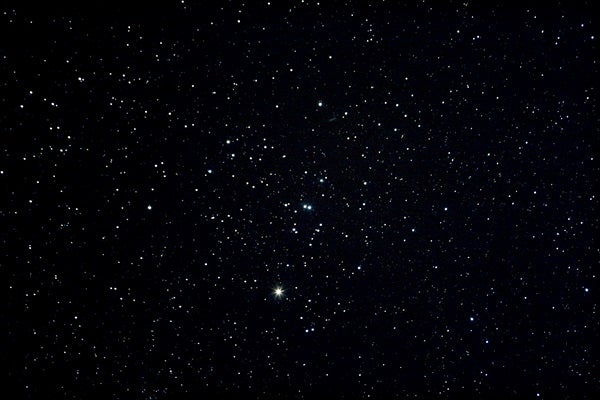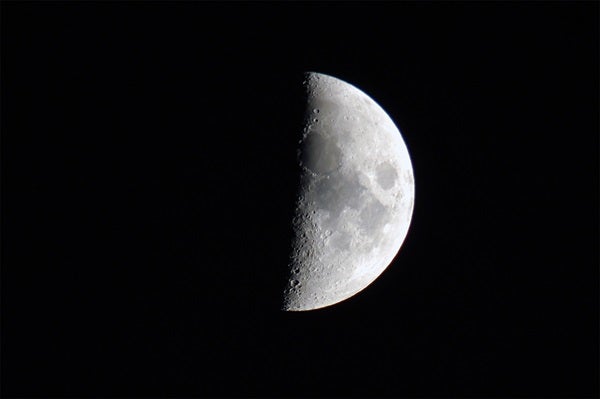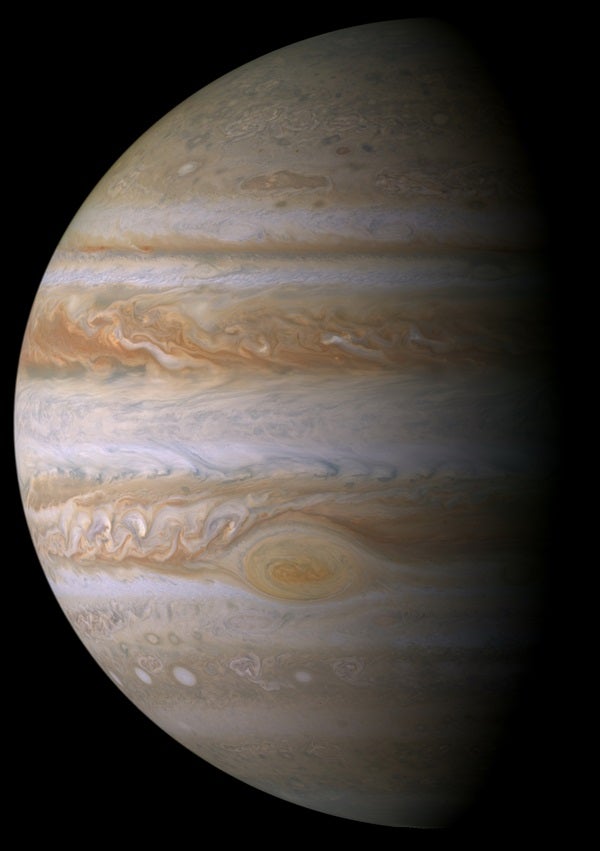Friday, March 31
This evening, the waxing Moon sits on the western edge of the Hyades star cluster in Taurus the Bull. The 20-percent-lit crescent lies below and a little to the right of 1st-magnitude Aldebaran, the orange sun that marks the upper left corner of the V-shaped Hyades. In reality, however, the star is a foreground object that only appears along the same line of sight as the cluster.
Saturday, April 1
Mercury reaches greatest elongation at 6 a.m. EDT, and tonight marks the peak of its best evening apparition of 2017. The innermost planet lies 19° east of the Sun and stands 9° high in the western sky 45 minutes after sunset. It shines at magnitude –0.2 and shows up easily against the darkening sky. If you can’t spy Mercury right away, sweep the area with binoculars. A view of the inner world through a telescope reveals an 8″-diameter disk that appears 39 percent illuminated.
Sunday, April 2
After passing between the Sun and Earth just eight days ago, Venus already appears conspicuous in the predawn sky. It rises an hour before the Sun and climbs 6° above the eastern horizon 30 minutes later. The planet shines so brightly, at magnitude –4.2, that it shows up easily in the brightening twilight. A telescope will deliver spectacular views of the inner world’s 57″-diameter disk, which appears just 3 percent lit.
Monday, April 3
First Quarter Moon arrives at 2:39 p.m. EDT. You can find the half-lit orb high in the southwest as darkness falls; it doesn’t set until about 2:30 a.m. local daylight time tomorrow morning. The Moon currently lies in south-central Gemini, between 10° and 15° southwest of the Twins’ brightest stars, Castor and Pollux.
Tuesday, April 4
The Big Dipper’s familiar shape rides high in the northeast on April evenings. The spring sky’s finest binocular double star marks the bend of the Dipper’s handle. Mizar shines at 2nd magnitude, some six times brighter than its 4th-magnitude companion, Alcor. Even though these two are not physically related, they make a fine sight through binoculars. (People with good eyesight often can split the pair without optical aid.) A small telescope reveals Mizar itself as double — and these components do orbit each other.
Wednesday, April 5
Saturn rises shortly after 1 a.m. local daylight time and climbs some 25° high in the south by the time morning twilight begins. The magnitude 0.4 ringed planet lies in the northwestern corner of Sagittarius the Archer, where it appears nearly stationary relative to the background stars. (Its slow eastward motion comes to a halt at 1 a.m. EDT on the 6th.) Take a look at the planet through binoculars and you’ll also see the open star clusters M21 and M23 as well as the spectacular Lagoon (M8) and Trifid (M20 ) nebulae less than 4° to its east. When viewed through a telescope, Saturn shows a 17″-diameter disk surrounded by a stunning ring system that spans 39″ and tilts 26° to our line of sight.
Thursday, April 6
The variable star Algol in the constellation Perseus reaches minimum brightness at 10:58 p.m. EDT. Because Algol dips fairly low in the northwest during the evening hours, you’ll stand a better chance at seeing its relative dimness by comparing tonight’s view with one tomorrow night. This evening, Algol glows at magnitude 3.4, noticeably dimmer than Alcyone, the brightest member of the Pleiades star cluster (M45), which lies directly to Algol’s left. Tomorrow night, Algol will shine at magnitude 2.1, easily brighter than Alcyone and rivaling Perseus’ brightest star, magnitude 1.8 Mirfak.
Friday, April 7
Brilliant Jupiter reaches opposition and peak visibility tonight. It rises in the eastern sky at sunset and climbs highest in the south around 1 a.m. local daylight time. Shining at magnitude –2.5, the giant planet is the night’s brightest celestial object with the exception of the waxing gibbous Moon and Venus, which doesn’t rise until morning twilight begins. Jupiter resides among the background stars of Virgo, some 7° northwest of that constellation’s brightest star, 1st-magnitude Spica, and a mere 0.3° west of 4th-magnitude Theta (q) Virginis. When viewed through a telescope, the gas giant’s disk spans 44″ and shows incredible detail in its cloud tops, while its four bright moons appear arrayed east and west of the planet.
Saturday, April 8
Although the calendar may say it is spring, the so-called Winter Hexagon remains prominent on April evenings. One of the sky’s largest asterisms — a recognizable pattern of stars separate from a constellation’s form — the hexagon stands out in the western sky after darkness falls. To trace this asterism, start with southern Orion’s luminary, Rigel. From there, the hexagon makes a clockwise loop. The second stop is brilliant Sirius in Canis Major. Next, pick up Procyon in the faint constellation Canis Minor, then the twins Castor and Pollux in Gemini, followed by Capella in Auriga, Aldebaran in Taurus, and finally back to Rigel.
Sunday, April 9
Mars continues to put on a nice show these April evenings. It appears nearly 20° high in the west an hour after sunset and doesn’t dip below the horizon until after 10 p.m. local daylight time. The magnitude 1.5 Red Planet lies among the background stars of Aries the Ram. Unfortunately, Mars’ 4″-diameter disk shows no detail when viewed through a telescope.












